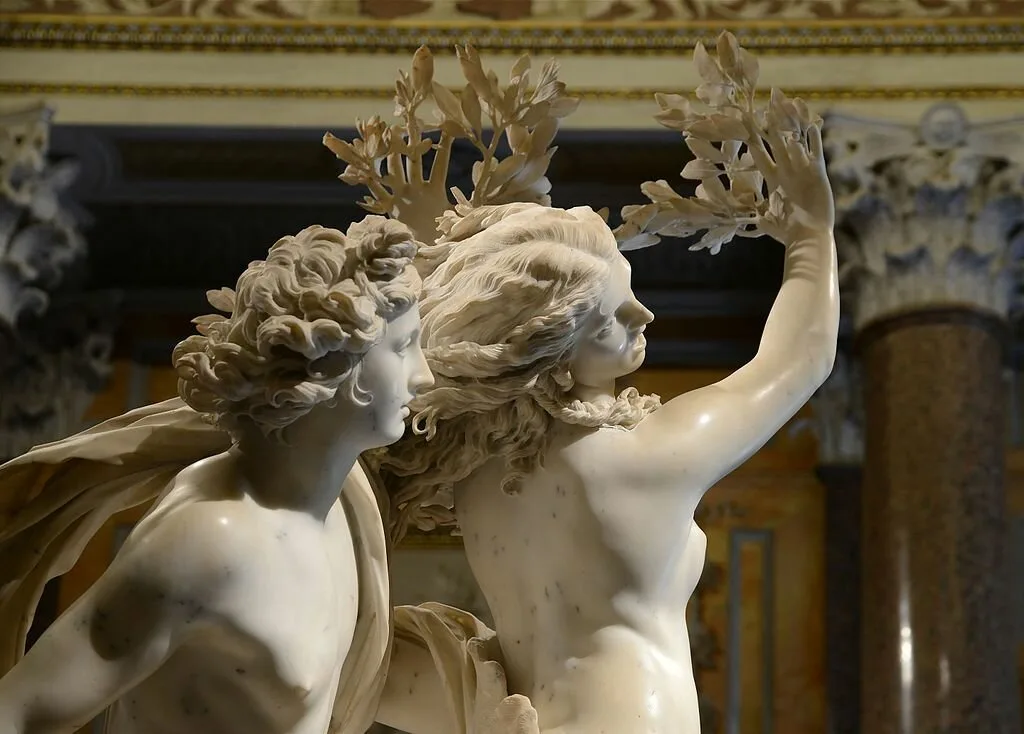Bernini’s Apollo and Daphne – The Transformation of Desire in Marble
Discover Bernini’s Apollo and Daphne at the Galleria Borghese, a Baroque masterpiece capturing the mythic moment of transformation with breathtaking realism.

Bernini’s Apollo and Daphne: The Moment Marble Turns to Flesh
Among all the treasures of the Galleria Borghese, none captures the Baroque spirit more perfectly than Gian Lorenzo Bernini’s Apollo and Daphne (1622–1625). Carved when the artist was barely in his twenties, it immortalizes the myth of pursuit and transformation from Ovid’s Metamorphoses.
The Myth Reimagined
The story tells of Apollo, struck by Cupid’s arrow of love, chasing the nymph Daphne, who flees him in terror. As he reaches her, she calls upon her father, the river god Peneus, to save her — and in that instant, her flesh turns to bark, her hair to leaves, her fingers to branches. Bernini freezes this very moment, where motion, emotion, and metamorphosis collide.
A Miracle of Movement
From every angle, the sculpture changes before your eyes. Apollo’s forward momentum meets Daphne’s backward flight; her transformation seems to unfold as you circle the piece. The marble flows like liquid — drapery fluttering, hair swirling, fingers sprouting leaves so delicate they appear translucent.
It is not just sculpture — it is narrative crystallized in stone. Bernini’s mastery lies in how he captures time itself, the split-second before desire turns into eternal loss.
Viewing Experience
The work was meant to be seen from the right, as if Apollo had just entered the room. The natural light filtering through the gallery’s windows enhances the illusion of movement. Beneath the sculpture’s plinth lies an inscription chosen by Cardinal Scipione Borghese:
“Those who love to pursue fleeting forms of pleasure, in the end find only leaves and bitter fruit.”
A timeless moral, rendered with divine beauty.
About the Author

Dr. Alessandra Rossi, Art Historian
An art and history enthusiast, I created this site to help visitors experience the Galleria Borghese fully. Drawing from personal visits, I share insights, tips, and practical advice for art lovers.
Tags
Comments (0)
Loading comments...